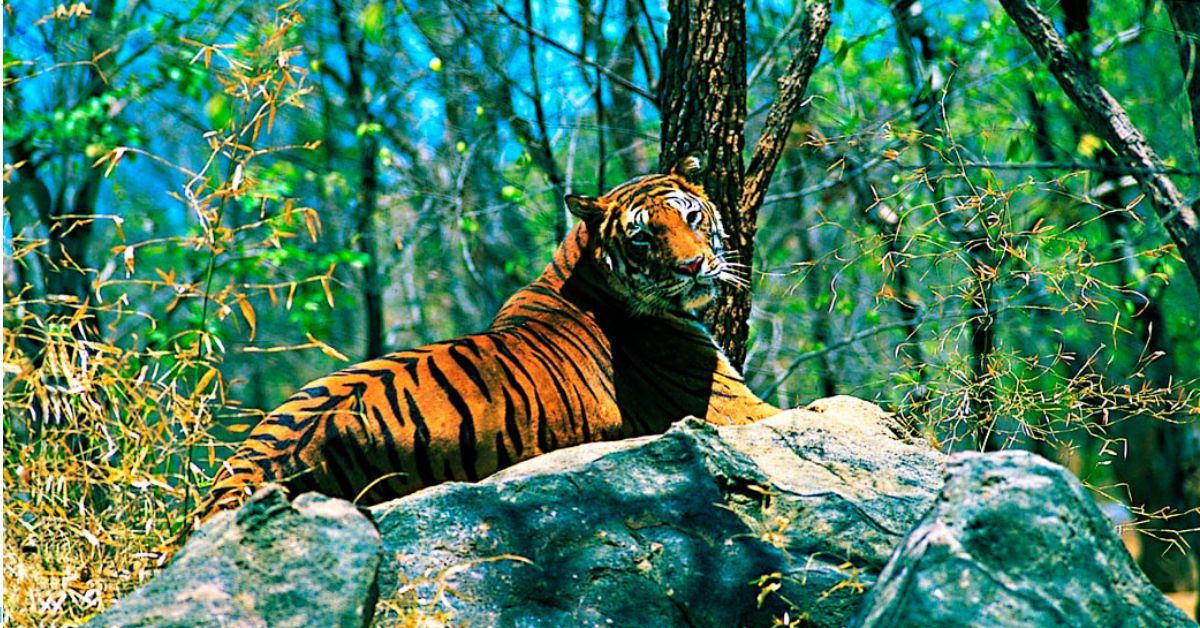Tucked away in the very northeast corner of India, Arunachal Pradesh boasts Namdapha National Park, a wild and untouched paradise. This park is enormous, covering almost 2,000 square kilometers, making it the third biggest in India. What really sets Namdapha apart is the incredible variety of life it holds. From lush rainforests teeming with plants and animals to snow-capped peaks, this park is a treasure trove of nature.
For anyone who loves the outdoors, Namdapha is a dream come true. It’s peaceful and calming, but there’s also plenty of adventure to be had. One amazing thing about Namdapha is that it’s the only place on Earth where all four big cats – tigers, leopards, snow leopards, and clouded leopards – live together! That’s not all though. Red pandas, Asian black bears, and over 425 different kinds of birds also call Namdapha home, making it a birdwatcher’s heaven.
How to reach:
Air: The closest airport is Dibrugarh Airport (Mohanbari Airport) in Assam, located approximately 182 kilometers from the park. Upon arrival, taxis and buses are available for hire to take you to Miao, the nearest town. From there, you can continue your journey to Namdapha National Park.
Train: Tinsukia Railway Station in Assam is the closest train station, situated roughly 141 kilometers away. Taxis and buses can be found at Tinsukia to transport you to Miao, the gateway to Namdapha National Park.
Road: If traveling by road, you have several options:
- Dibrugarh: Taxis and buses operate between Dibrugarh and Miao, with a travel time of approximately 6-7 hours.
- Tinsukia: Taxis and buses are available for hire in Tinsukia, offering a 4-5 hour journey to Miao.
- Guwahati: Traveling from Guwahati, Assam’s capital city, requires an overnight bus or taxi ride to reach Miao, roughly 600 kilometers distant. Expect a travel time of approximately 14-16 hours.
Best time to visit:
Winter Wonderland (October to April): This is the prime time to explore Namdapha! The weather is cool and refreshing, perfect for trekking and searching for wildlife. The dense forests become a little less crowded with leaves, making it easier to spot animals, including the magnificent big cats. Birdwatchers will also be delighted, as many migratory birds flock to the park during these winter months.
Monsoon Magic (May to September): While the monsoon transforms Namdapha into a breathtakingly lush paradise, it’s not the ideal time for most visitors. Heavy rainfall can make trails slippery and increase the risk of landslides, making travel and trekking challenging. Some areas of the park might even be inaccessible.
Attractions:
Deban:
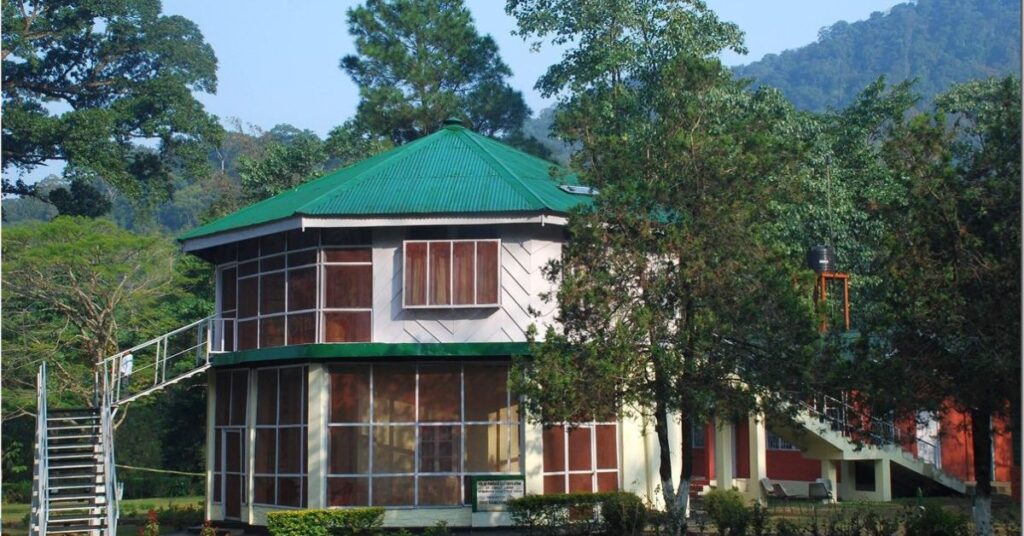
Nestled right at the entrance to Namdapha National Park is Deban, a picture-perfect spot. Imagine this: a tranquil river called Noa-Dihing flowing gently by, and you’re right there on its bank! Deban is like the park’s welcoming handshake, the first place most visitors set foot in.
The Deban Forest Rest House is where you’ll stay. This charming bungalow, built way back in colonial times, is comfy and offers stunning views of everything around. It’s the perfect launchpad for treks and wildlife safaris deeper into Namdapha. But even before you set off on those adventures, Deban itself is a paradise to relax in. It’s peaceful and quiet, letting you soak in the clean air and beautiful scenery.
Noa-Dihing River:
The Noa-Dihing River is like the beating heart of Namdapha National Park. It snakes its way through the park, keeping everything alive and well with its cool, refreshing water. Animals of all shapes and sizes depend on the river for a drink, making it a vital part of the park’s ecosystem.
For visitors, the Noa-Dihing is more than just a pretty sight. You can actually get out on the river itself! Take a boat ride for a relaxing cruise, or try your hand at fishing (just remember to follow the rules). Feeling adventurous? See if you can find a safe spot for a little swim (always ask a guide first!).
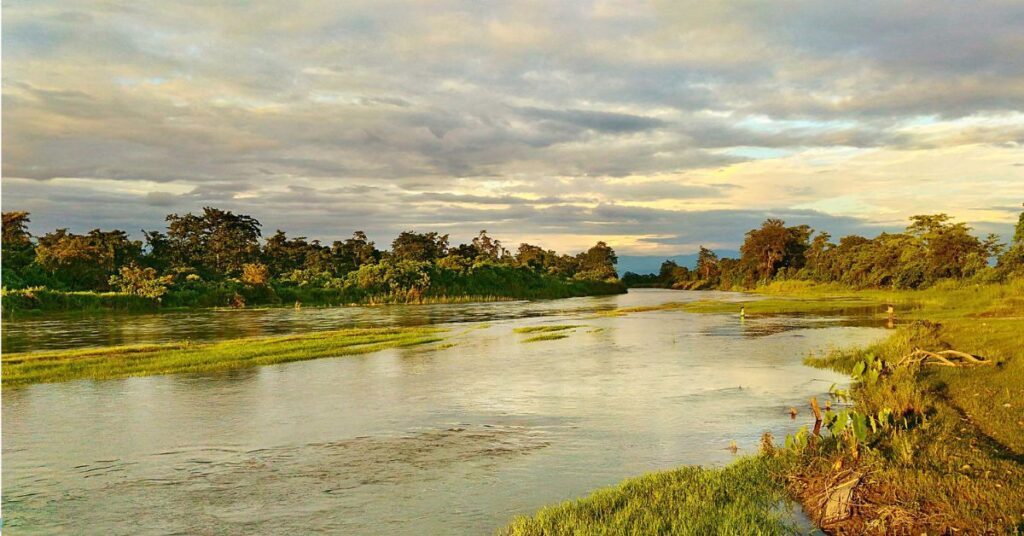
Miao Museum:
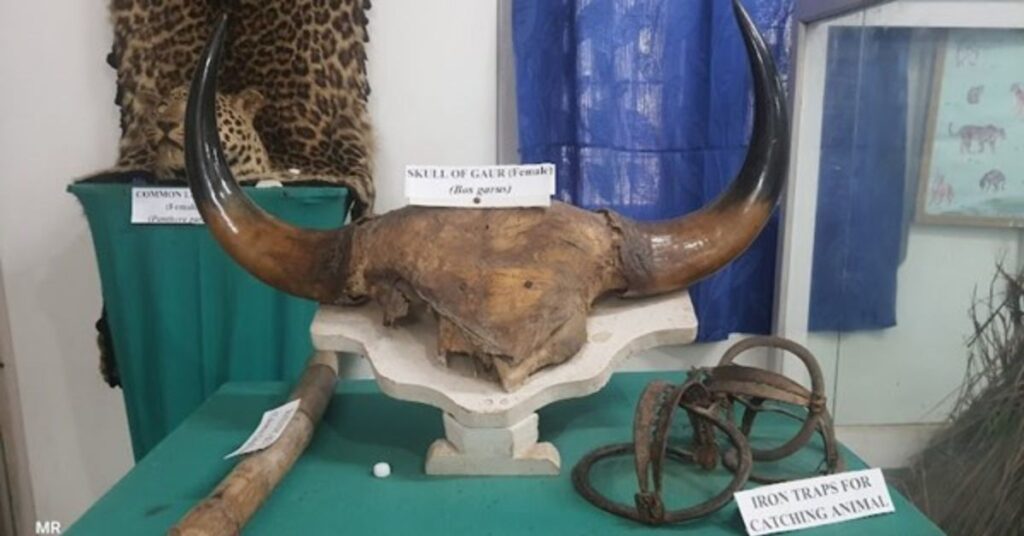
Want to learn more about the people and animals around Namdapha National Park? Head to the Miao Museum in the nearby town of Miao. This little museum is packed with cool stuff that tells the story of the park and the people who live there.
There are displays showing off traditional clothes, tools, and handicrafts made by the local tribes. It’s a great way to see how they live and what their culture is all about. But the museum isn’t just about people. There’s also a whole section on the amazing wildlife of Namdapha, with info on all the different animals that call the park home. You’ll even learn about how they’re working to protect these creatures.
Bird Watching:
Birdwatchers, listen up! Namdapha National Park is your dream come true, with over 425 different bird species calling it home. Imagine this: from steamy jungles all the way up to chilly mountain meadows, Namdapha has all sorts of habitats, which means all sorts of birds love living here!
One of the rarest birds you might spot is the White-winged Wood Duck. They’re kinda endangered, so seeing one is a real treat. Keep an eye out for the Great Indian Hornbill too – this giant bird is hard to miss with its colorful beak! Winter brings even more feathered friends to the park, making it an even better time for birdwatching.
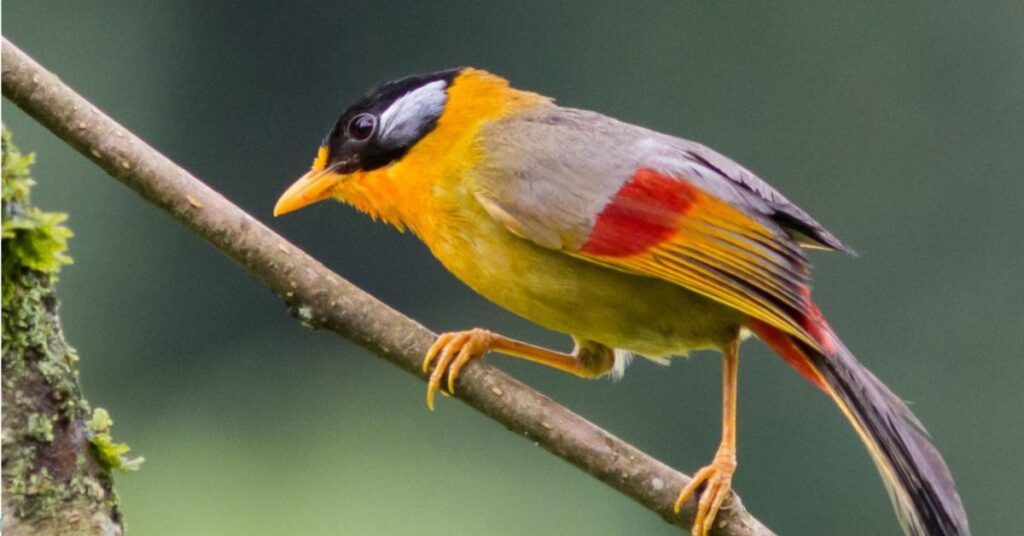
Local Experiences:
- Village Visits: Step into a local village and witness age-old traditions and customs come alive. See how they live, work, and celebrate.
- Meet the Makers: Get to know local artisans and explore their unique crafts. You might even find the perfect souvenir handcrafted with love.
- Homestays: Experience true hospitality with a homestay. Live alongside a local family, share delicious home-cooked meals featuring traditional recipes, and swap stories under the stars.
- Losar and Sangken: Witness the excitement of local festivals, filled with colorful dances, ceremonial rites, and festive feasts. Feel the warmth of community spirit.
- Local Delights: Tantalize your taste buds with regional specialties like bamboo shoot curry and smoked pork. Explore local markets overflowing with fresh produce and unique ingredients. Don’t miss out on sampling homemade snacks and sweets!
- Eco-projects: Support sustainable community projects and guided tours led by locals.
- Volunteer Opportunities: Lend a helping hand with conservation efforts and give back to the park’s incredible ecosystem.
- Nature Walks: Embark on guided walks through the diverse flora of Namdapha. Learn about medicinal plants and traditional healthcare practices used for generations. Gain a deeper appreciation for the park’s delicate ecological balance.
Travel tips:
- You’ll need permits to enter Arunachal Pradesh and Namdapha National Park. Make sure to obtain these beforehand.
- Keep multiple photocopies of your Inner Line Permit (ILP) and other ID handy for verification during your trip.
- Exploring Namdapha with a knowledgeable local guide is highly recommended.
- They’ll help you navigate the terrain, spot wildlife, and gain insights into the local culture.
- Namdapha’s weather can change quickly, so pack layers of clothing for various conditions.
- Sturdy, waterproof hiking boots are essential for the rough terrain.
- If you’re visiting during the monsoon (May-September), bring rain gear.
- Pack any medications you need, along with a first-aid kit.
- Stay hydrated by carrying enough water and snacks throughout your explorations.
- Use insect repellent to ward off insects and leeches.
- Maintain a safe distance from wild animals. Never attempt to feed or approach them.
- Follow your guide’s instructions to ensure your safety and the animals’ well-being.
- Avoid loud noises or sudden movements that might disturb the wildlife.
- Be respectful of the local customs and traditions of the tribal communities.
- Always ask permission before photographing people and be courteous during interactions.
- Learn a few basic phrases in the local language to show respect and ease communication.
- Follow “Leave No Trace” principles: pack out all your trash and minimize your impact on the environment.
- Opt for reusable water bottles and containers to avoid single-use plastics.
- Stick to designated trails to prevent damage to the delicate ecosystem.
- Check the weather forecast before your trip and be prepared for sudden changes.
- The monsoon season brings slippery trails and swollen rivers, so plan accordingly (June-September).
- October to April offers the most favorable weather conditions for visiting.
Conclusion
Unveiling a secret paradise in Arunachal Pradesh, Namdapha National Park stuns with its rich tapestry of biodiversity, breathtaking landscapes, and vibrant tribal culture. As one of India’s most remote and pristine sanctuaries, it beckons adventurers and nature lovers for an unparalleled exploration. Imagine trekking through dense jungles teeming with life, spotting rare animals in their natural habitat, or engaging with the wisdom of indigenous communities – every moment in Namdapha promises a thrilling discovery. Craft your perfect Namdapha adventure with Xplro.com, your one-stop guide for permits, packing essentials, and responsible travel practices. Remember, respecting the environment and local culture is key to leaving a positive footprint on this remarkable region. Let Namdapha National Park leave an everlasting mark on you.
FAQs
What makes Namdapha National Park special?
- Namdapha National Park is distinguished by its exceptional biodiversity, including the presence of all four major big cat species—tiger, leopard, snow leopard, and clouded leopard. It is also noted for its rich variety of flora, such as rare orchids and medicinal plants, as well as its pristine and untouched landscapes.
How can I get to Namdapha National Park?
- To reach Namdapha, you can fly into Miao, the closest town with an airport. From Miao, travel by road to Deban, the main entry point to the park. Alternatively, you can fly into Dibrugarh Airport in Assam and take a road trip to Miao, or check for direct flights to Miao Airport, which have limited availability.
When is the best time to visit Namdapha National Park?
- The best time to visit Namdapha is between October and April when the weather is more suitable for trekking and wildlife observation. Although the park is open during the monsoon season (June to September), heavy rainfall can make trails slippery and rivers may swell.
What permits are needed to visit Namdapha National Park?
- Visitors must acquire an Inner Line Permit (ILP) for Arunachal Pradesh and a special permit for Namdapha National Park. These permits can be obtained from the Arunachal Pradesh tourism office or online.
What are the accommodation options at Namdapha National Park?
- Inside the park, you can stay at the Deban Forest Rest House. Nearby Miao and other surrounding areas offer lodges and homestays, with homestays providing a more authentic experience as they are operated by local families.
Are guided tours available in Namdapha National Park?
- Yes, guided tours are recommended for exploring Namdapha. Local guides, who are knowledgeable about the park’s terrain, wildlife, and culture, can enhance your visit and ensure a safer experience.
What wildlife can I see in Namdapha National Park?
- The park hosts a diverse array of wildlife, including the four big cat species (tiger, leopard, snow leopard, and clouded leopard), red pandas, Asiatic black bears, elephants, and various deer species. It is also a haven for birdwatchers with numerous rare and migratory bird species.
Is trekking allowed in Namdapha National Park?
- Yes, Namdapha offers several trekking routes such as the Deban to Hornbill trek, and the Bijoynagar and Firmbase treks. These trails vary in difficulty and allow you to explore the park’s diverse terrain and wildlife.
What should I bring for a visit to Namdapha?
- Pack layered clothing to handle changing weather, sturdy waterproof trekking shoes, rain gear, insect repellent, a first-aid kit, and enough food and water. Also, bring a camera and binoculars for wildlife viewing.
Are there any rules or restrictions for visitors?
- Yes, visitors must adhere to park regulations, including maintaining a safe distance from wildlife, avoiding littering, and sticking to designated trails. Photography of local people should be done with their consent. It is important to respect both the environment and local culture.
Is mobile network coverage available in Namdapha National Park?
- Mobile network coverage is limited in the park’s remote areas. It is a good idea to inform someone of your travel plans and expected return times, especially if you are heading into the deeper parts of the park.
How can I contribute to conservation efforts in Namdapha?
- Support conservation by following park guidelines, participating in eco-tourism initiatives, and respecting wildlife and natural environments. You can also get involved with local community projects or conservation organizations working in the region.


